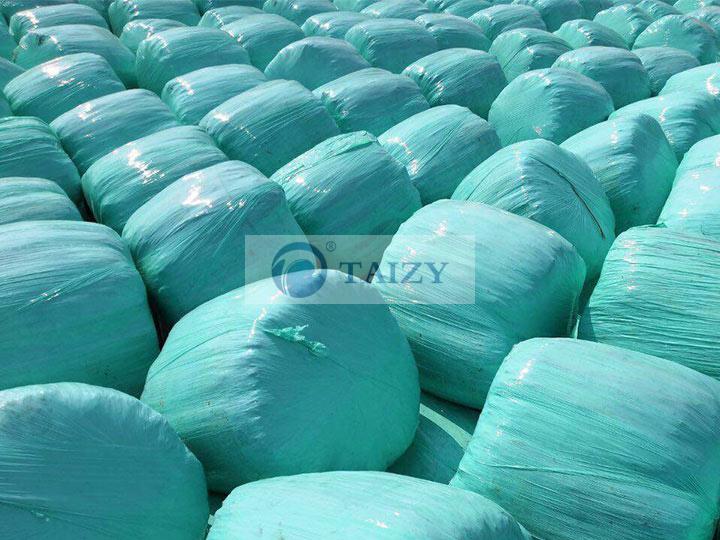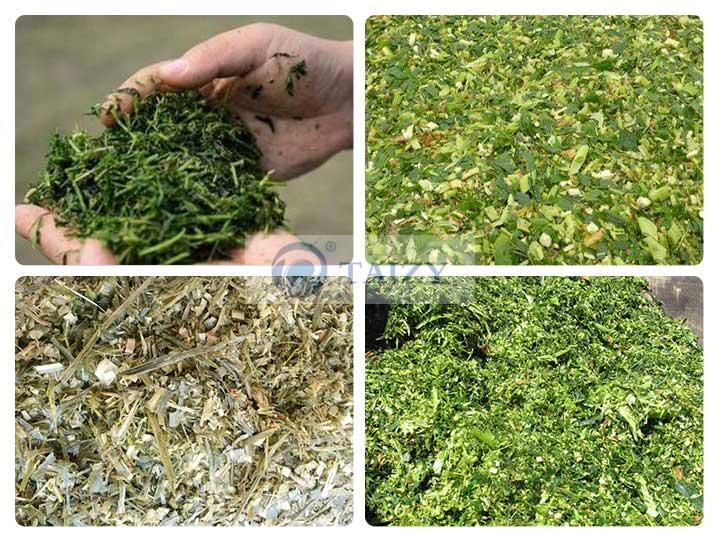Before making silage, we need to know what silage is, what are the raw materials of silage, the process of silage, types of silage, and the principle of silage.
What Is the Silage/Corn Silage?
Silage is formed by sealing and fermenting plant feeds with more water content, and corn silage is made by fresh corn stalk. It is mainly used to feed ruminants. Silage is more durable than fresh feed and has stronger nutrients than dry feed. In addition, the silage storage occupies a small area and there is no fire problem. Silage has a sour smell, soft and juicy, good palatability, rich nutrition, and is good for long-term storage. It is an excellent source of feed for livestock.

What Are the Raw Materials of Silage?
Use a chaff cutter or a straw harvester to crush or harvest fresh crop products and by-products that contain a certain amount of sugar, such as corn stalks, wheat stalks, rice straw, sweet potato seedlings, and forage grass and other raw materials. The raw material is cut into lengths of 2-4 cm. It can be longer for those with more water content and softer, and shorter for those with less water content and harder. Various raw materials can be mixed and formulated, and the moisture content is preferably 55-70%. The prepared raw materials can be sealed, fermented, and permanently silaged by using a silage baling machine. Mature silage is green to dark green in color, soft and moist, and can be stored for about one year.

The Process of Silage
There must be two processes from green pasture or straw to silage. One is the cutting or crushing of raw materials, and the other is the silage wrap. According to the livestock you raised, you can crush pasture, corn stalks, or other straw into different degrees, such as segments and kneading. After that, the crushed green feed is bundled, wrapped, and fermented by using a silage baler machine. The suitable temperature during the silage process is 20°C, and the highest temperature should not exceed 37°C. The temperature is generally controlled at 35°C. It is best not to exceed 30°C. Generally speaking, the total number of microorganisms reaches the highest peak during 5-7 days of fermentation, and lactic acid bacteria are the main ones. Normal silage fermentation generally takes 17 to 21 days.
Types of Silage
The current silage includes grass silage, corn silage, rice straw silage, and so on. According to the silage method, there are the following types of silage
General silage: the raw materials are chopped, compacted and sealed to make lactic acid bacteria multiply in an anaerobic environment, thereby turning the starch and soluble sugar in the feed into lactic acid. When lactic acid accumulates to a certain concentration, it inhibits the growth of spoilage bacteria and preserves the nutrients in the green feed.
Semi-dry silage (low-moisture silage): The low moisture content of the raw materials makes the microorganisms in a physiologically dry state, and their growth and reproduction are inhibited. The microorganisms in the feed are weakly fermented, and the nutrients are not decomposed, so as to achieve the purpose of preserving nutrients. Due to the low moisture content of this type of silage, other conditions are not strict, so compared with general silage, a wider range of raw materials can be used.
Additive silage: Some additives are added to affect the fermentation of silage. Such as adding various soluble carbohydrates, inoculating lactic acid bacteria, adding enzyme preparations, etc., which can promote lactic acid fermentation, quickly produce a large amount of lactic acid, so that the pH will quickly reach the required (3.8-4.2); or add various acids, antibacterial agents, etc. It can inhibit the growth of spoilage bacteria and other microorganisms that are not conducive to silage. This can improve the silage effect and expand the range of silage raw materials.
The Principle of Silage
The Principle of Lactic Acid Fermentation
Silage is a kind of rough feed obtained by cutting green feed with a moisture content of 65%-75%, and under airtight anoxic conditions through the fermentation of anaerobic lactic acid bacteria to inhibit the reproduction of various bacteria. Fresh pasture and forage crops are cut by using a chuff cutter machine or a corn silage harvester machine and then wrapped the film with a silage baler and wrapper machine to allow the fresh pasture to ferment in an air-isolated environment. The plant cells can still perform respiration and deplete the residual oxygen in the silage material in the membrane, causing anaerobic conditions and promoting the reproduction of lactic acid bacteria. Through the anaerobic acidification process, the carbohydrates (mainly sugars ) in the silage raw materials are transformed into organic acids mainly composed of lactic acid and accumulated in the silage raw materials. When the organic acid accumulates to 0.65% to 1.30% (good silage can reach 1.5% to 2.0%), or when the pH drops below 4.2 to 4.0, most microorganisms stop reproducing. Due to the continuous accumulation of lactic acid, the acidity increases, and finally the lactic acid bacteria themselves are inhibited and stop moving, so that the feed can be stored for a long time.
Note: Silage contains more organic acids, which has a laxative effect. Let the livestock gradually get used to the taste when you first start feeding. There is no need to deliberately seal it after each use, because compaction cannot be done at this time, sealing with plastic cloth instead forms a humid and hot environment, and the secondary fermentation is more serious.
If you have any questions about the silage baler and wrapper machine, chaff cutter machine, and straw harvester machine mentioned in the article, you can refer to our product article.
